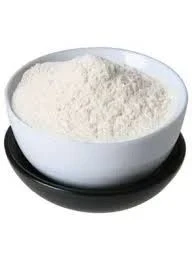
Nov . 30, 2024 03:00 Back to list
Exploring the Applications and Benefits of Methyl Hydroxyethyl Cellulose in Various Industries
Methyl Hydroxyethyl Cellulose A Versatile Polymer in Modern Applications
Methyl hydroxyethyl cellulose (MHEC) is a cellulose derivative that has gained significant attention in both industrial and consumer applications. This versatile polymer is synthesized by the etherification of cellulose, where the hydroxyl groups of the cellulose backbone are modified with methyl and hydroxyethyl groups. The unique properties imparted by these modifications make MHEC an indispensable ingredient in various formulations across multiple industries.
Methyl Hydroxyethyl Cellulose A Versatile Polymer in Modern Applications
In the food industry, MHEC serves as a food additive with multiple functions. It is utilized as a stabilizer, emulsifier, and thickener in a variety of processed foods, such as sauces, dressings, and dairy products. Its ability to improve texture while remaining taste-neutral makes MHEC an ideal choice for food manufacturers aiming to enhance mouthfeel and overall product quality without affecting flavor profiles. Moreover, being a plant-based ingredient, it fits well within the growing demand for vegetarian and vegan products.
methylhydroxyethyl cellulose

MHEC is also prevalent in the pharmaceutical sector, where it is used in drug formulations. Its role as a controlled-release agent in tablets ensures a gradual release of active ingredients, which can enhance the therapeutic efficacy of medications. Furthermore, MHEC's biocompatibility makes it a suitable excipient for various applications, including topical formulations and drug delivery systems.
An additional area where MHEC shines is the personal care industry. It is incorporated into a wide range of cosmetic products, such as lotions, shampoos, and gels, due to its film-forming and thickening properties. These characteristics not only improve the aesthetic qualities of the products—such as texture and viscosity—but also enhance their stability and shelf-life. Consumers benefit from improved product performance, while manufacturers enjoy the versatility and cost-effectiveness of MHEC.
Environmental considerations have led to a growing interest in bio-based materials, and MHEC fits this paradigm perfectly. Being derived from renewable cellulose sources, it aligns with the increasing push towards sustainable and eco-friendly products. This shift is particularly evident in industries where consumer preferences are rapidly changing, highlighting the need for transparency and sustainability in product formulations.
In conclusion, methyl hydroxyethyl cellulose represents a remarkable example of how a simple plant-based polymer can have far-reaching implications across diverse industries. Its multifunctionality as a thickener, stabilizer, and emulsifier allows for enhanced product performance in construction, food, pharmaceuticals, and personal care. As industries continue to innovate and seek sustainable alternatives, the role of MHEC is likely to expand even further, solidifying its status as a crucial ingredient in modern formulations. Whether it is enhancing the texture of a favorite food product or improving the efficacy of a medication, MHEC’s versatility is transforming approaches across various sectors.
-
Unlocking the Benefits of HPMC Products: A Gateway to Versatile Applications
NewsAug.07,2025
-
Unleashing the Potential of HPMC Ashland: A Comprehensive Look
NewsAug.07,2025
-
Tile Bonding Cellulose: The Key to Superior Adhesion and Durability
NewsAug.07,2025
-
Hydroxypropyl Methylcellulose Powder: The Versatile Component in Modern Pharmaceuticals
NewsAug.07,2025
-
Hydroxyethyl Cellulose: The Versatile Solution for Various Industries
NewsAug.07,2025
-
Hydroxyethyl Cellulose (HEC): The Versatile Polymer for Various Applications
NewsAug.07,2025







